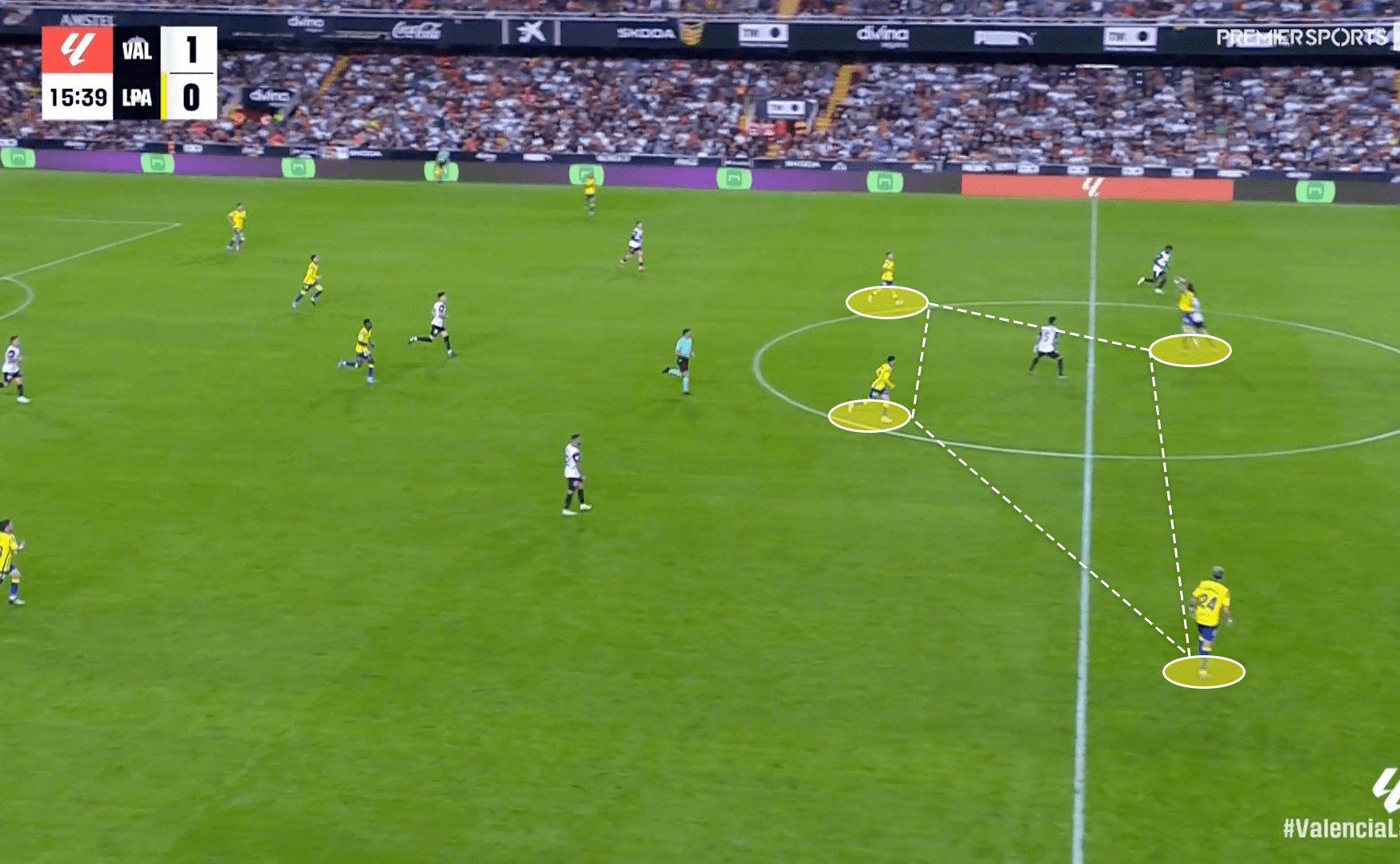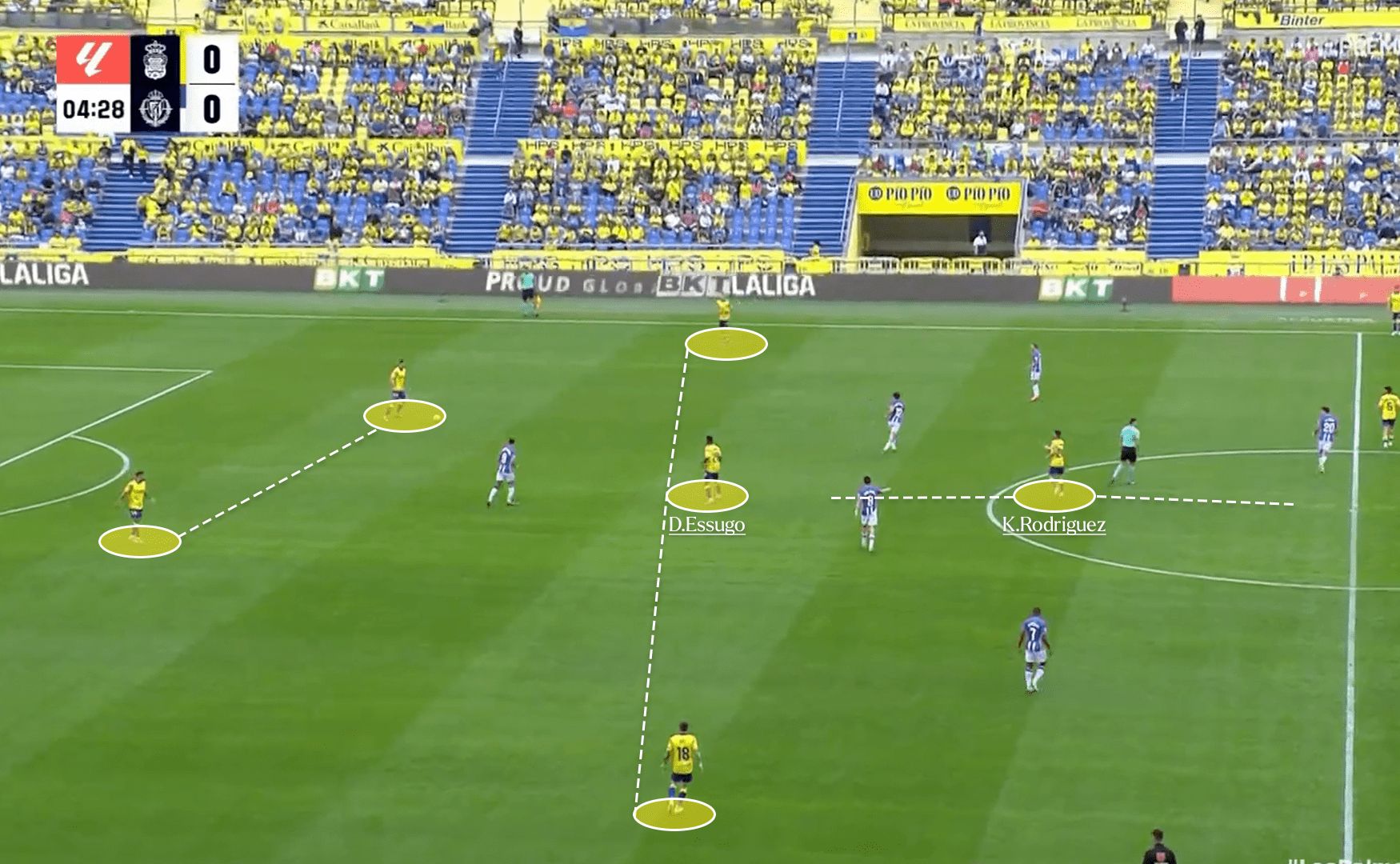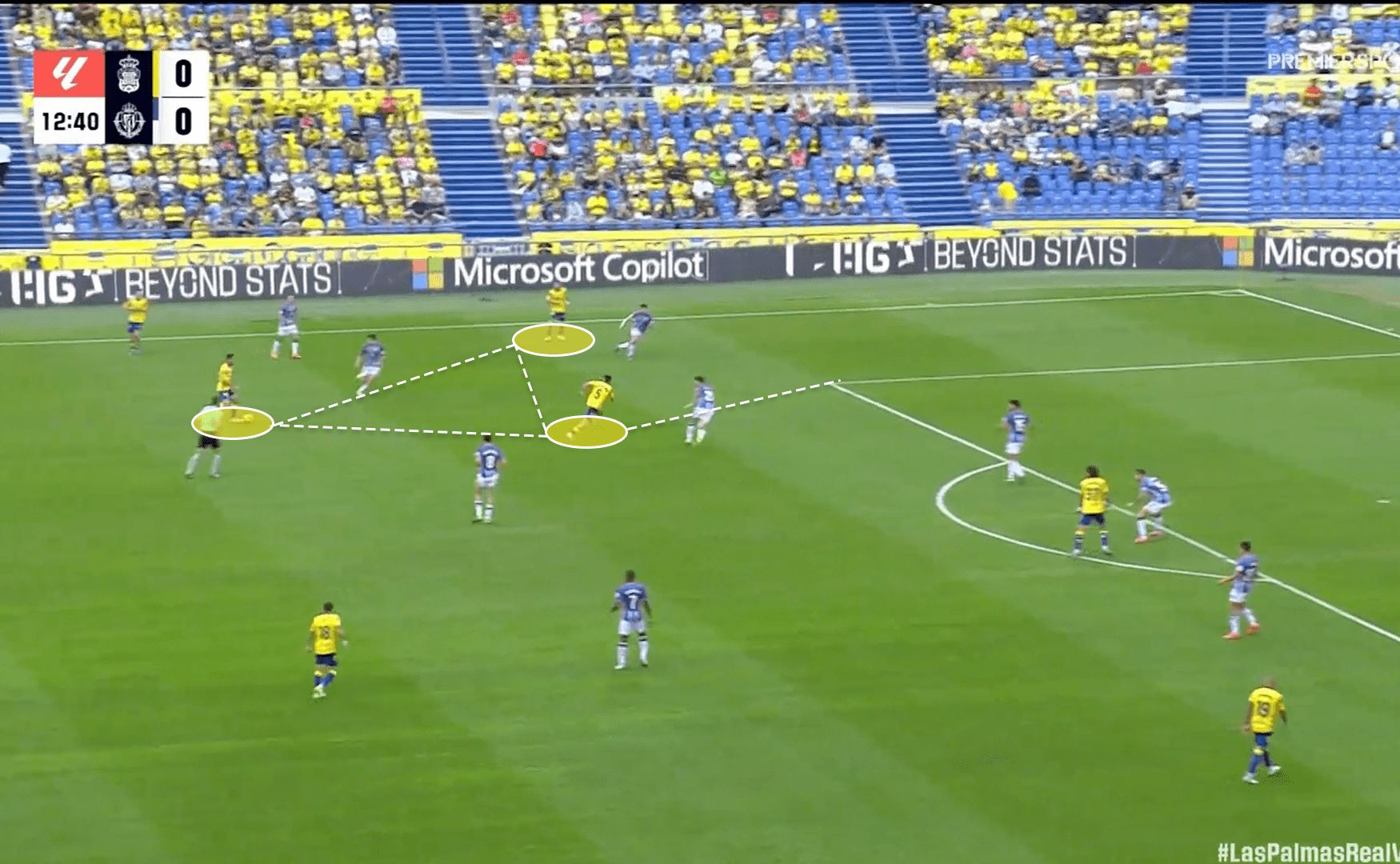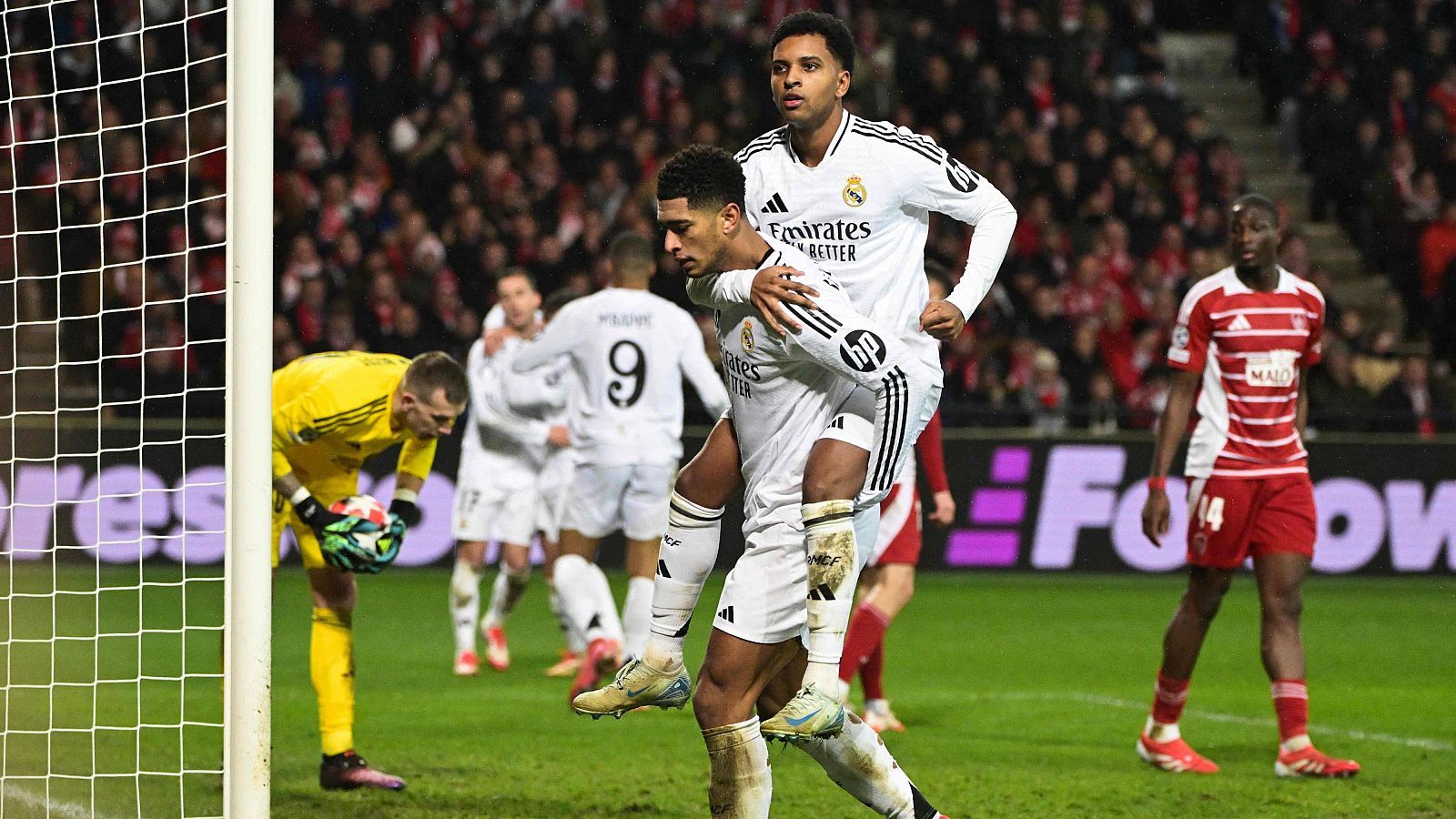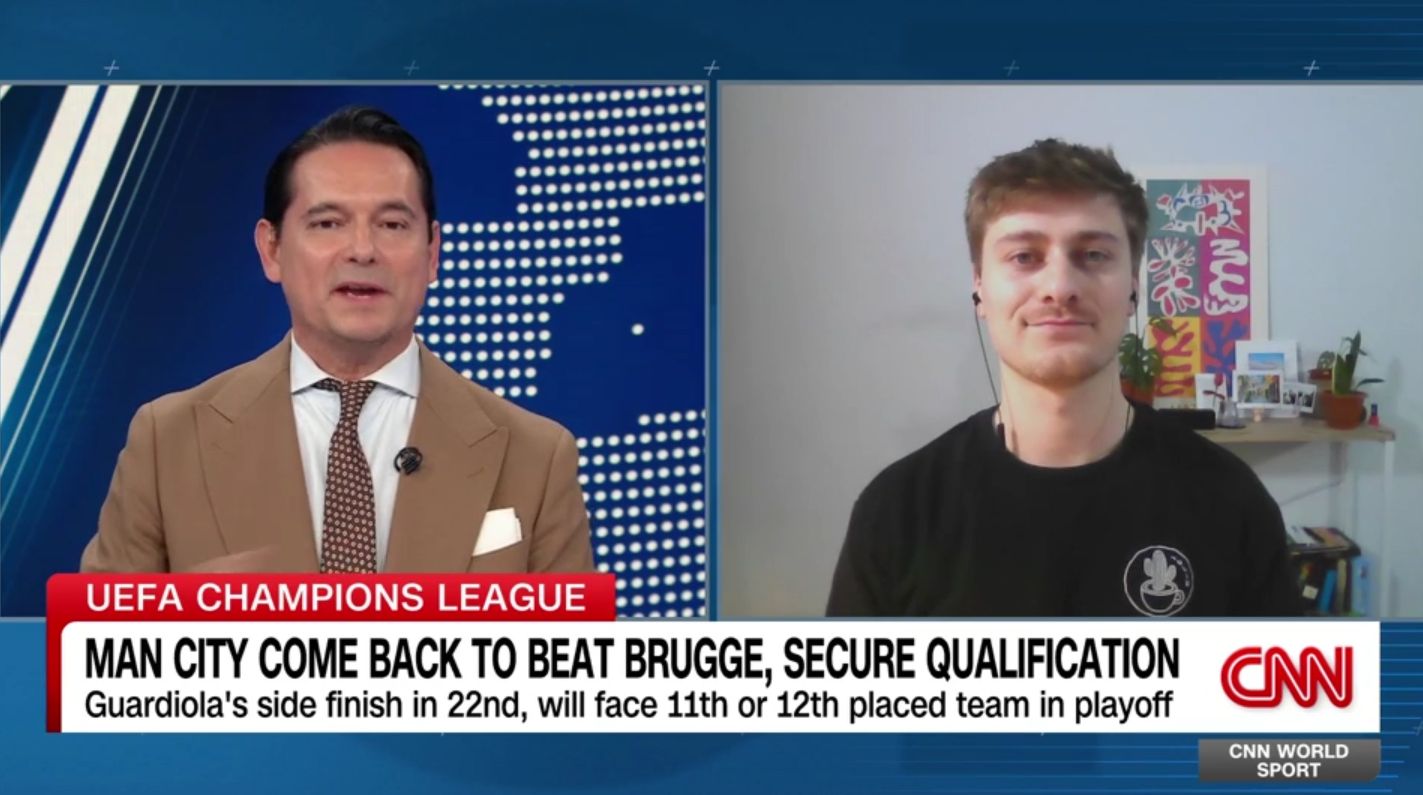
Diego Martinez arrived at Las Palmas in October 2024 with a mission on his hands. The Islanders were marooned at the base of La Liga, cast adrift after nine games without a win—desperate for a lifeline.
Los Amarillos supporters endured a confusing tactical arrangement under short-lived head coach Luis Carrion, where the style of play hovered somewhere between ponderous and ineffective. They were easily pressed, vulnerable to turnovers—particularly in their build-up—and laborious in the final third.
In his short spell, Carrion failed to build upon the foundations set by Garcia Pimienta the previous season before his paddle ashore to Seville. The early-season switch has clearly paid dividends: since Martinez’s bow at Estadio Gran Canaria, they have won 20 out of a possible 36 points, compared to Carrion’s three from an available 27.
With the same group of players, Martinez is sentient to the problems that arose – so what impact has he had on them?
The style of play
“I would like the team, while respecting its essence, to be able to play with different systems in a match. That’s how modern football is, but if not, we will play with a single system.” Those were the words of Martinez upon his arrival, and he has implemented a transparent blueprint for how they should play:
- Play quickly.
- Create numerical superiority in each zone.
- Protect the centre of the goal.
- Regain the ball in the middle third.
A first phase of possession for Las Palmas involves them building out form the back in a box. This means their defensive line drops into a deep shape around 18-yard box. The double-pivot midfield pairing then shift in line with the full-backs, who remain slightly higher – creating a 2-4 shape.
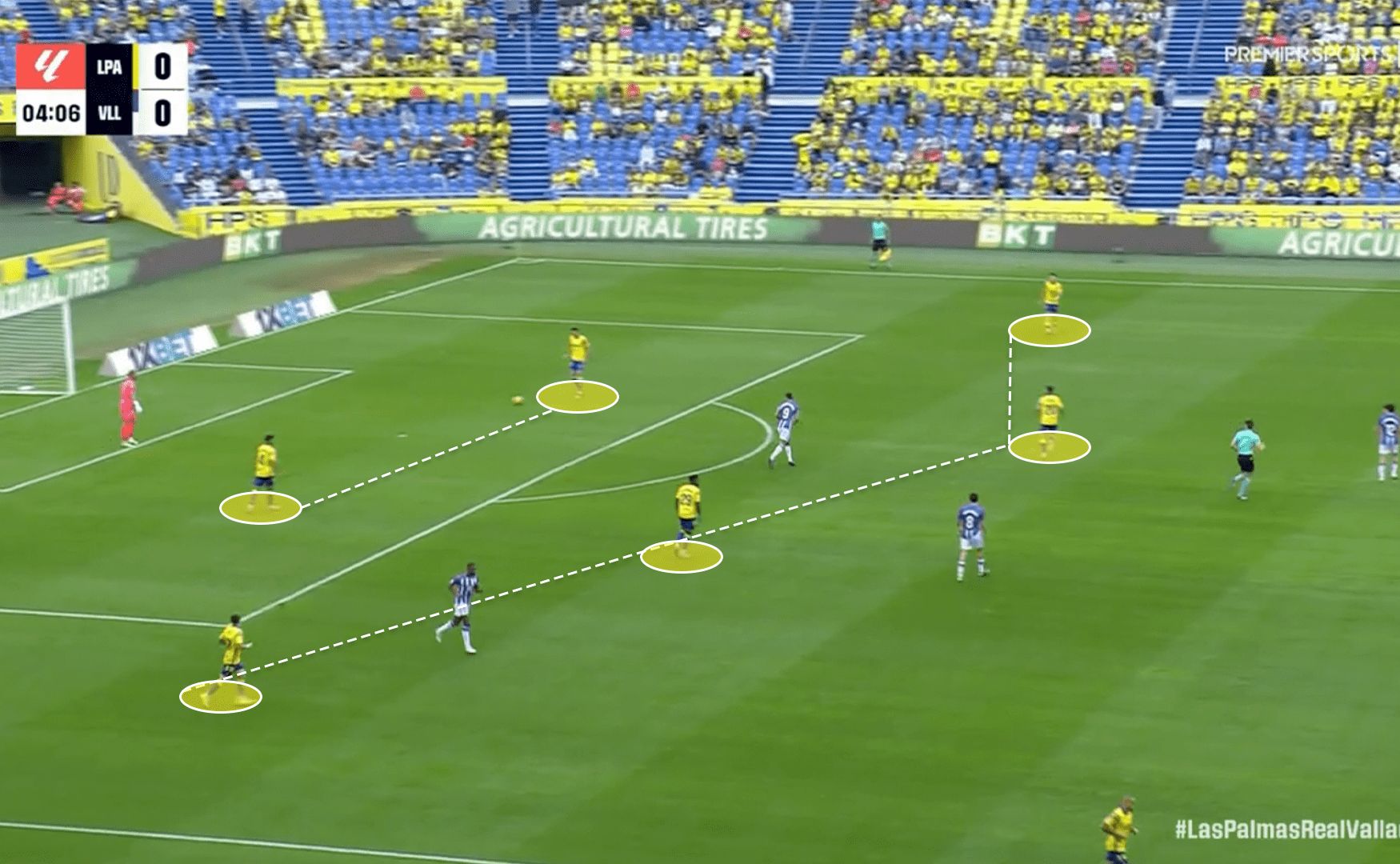
This structure creates a dilemma for the opposition when pressing. Do they step up and potentially expose themselves with space behind? Or sit deep and allow Los Amarillos to come onto them, knowing that they have ball-playing threat to break?
Ready and waiting behind them is another box, in which the two wingers will tuck into, one pairing with the striker and the other with the most advanced midfielder – providing a receptacle should they go long. The structure including the whole team becomes a 2-4-2-2, creating two areas of numerical superiority as they aim to break through the press.

Off the ball, they press in a fairly generic 4-4-2, which can become a lop-sided 4-2-4 when the opposition play into a channel. They tend to have a fairly low line of engagement, which can invite teams onto them.
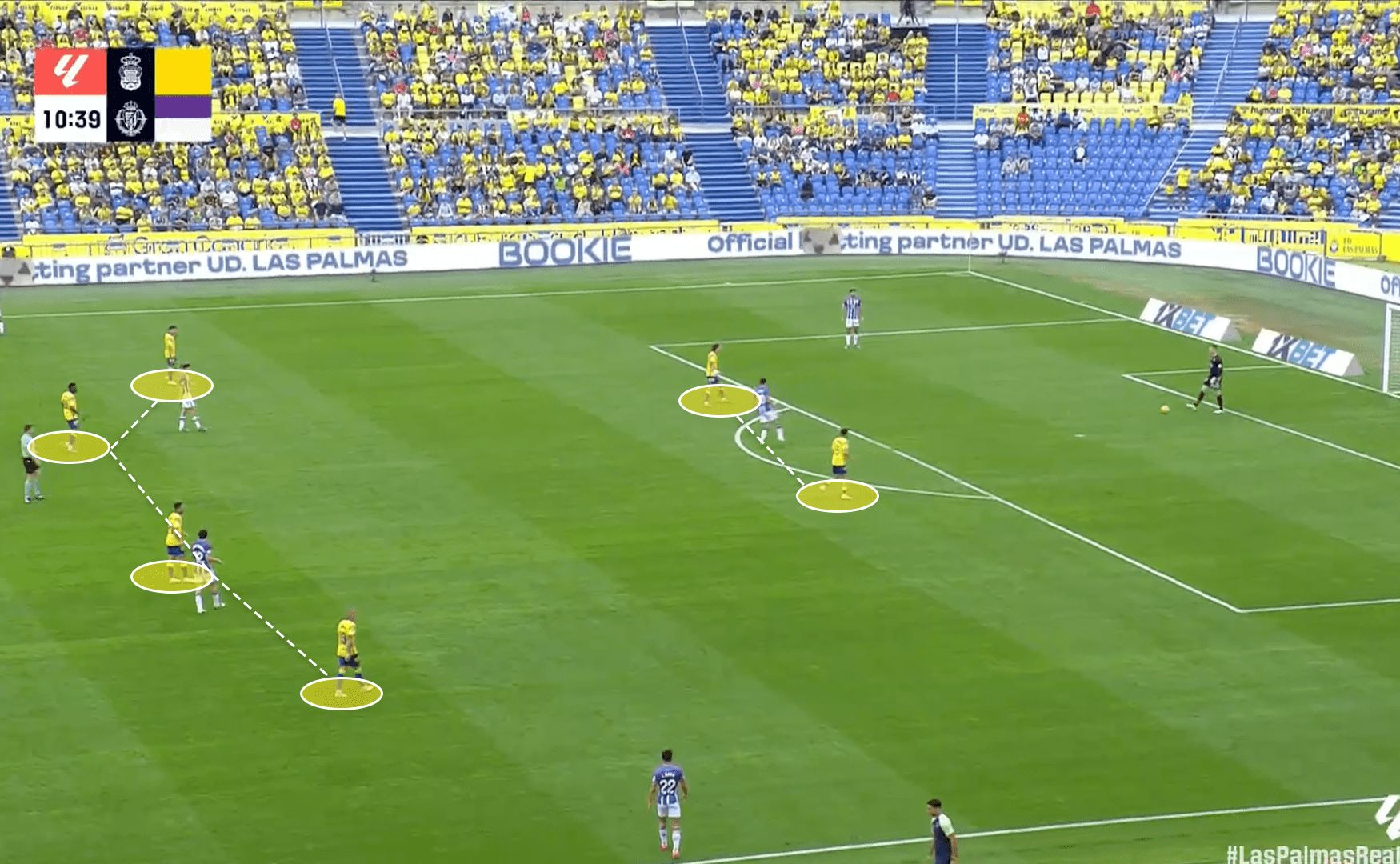
The main difference between Carrion and Martinez, who do actually share similar, popular modern day structures, is that Martinez wants to see his side pass, and block with more vigour.
Blending Essugo and Kirian
A midfield pairing that would not look out of place at the other end of the division. Between Dario Essugo and Kirian Rodriguez, they can just about do everything you would like a midfielder to.
On-loan Sporting Lisbon midfielder, Essugo is the duel winner in this partnership – ranking within the top 13% of La Liga midfielders for tackles, and in the top 3% for interceptions. These numbers, alongside his impressive pass completion rate of 87%, make him the perfect player to anchor Los Amarillos.
Occasionally, Martinez’s side will break their usual structure, and leave Essugo, on his own to receive from the defence, which given his quality – he is comfortable to do. This allows Kirian to move beyond that build-up configuration and play between the lines higher up the field.

For Kirian, this comes naturally, ranking within the top 12% for progressive passes, completing a mighty average of 6.86 per game. His ability to open his body up to give him passing angles on either foot is invaluable for Martinez’s side, who try to play quick combinations.
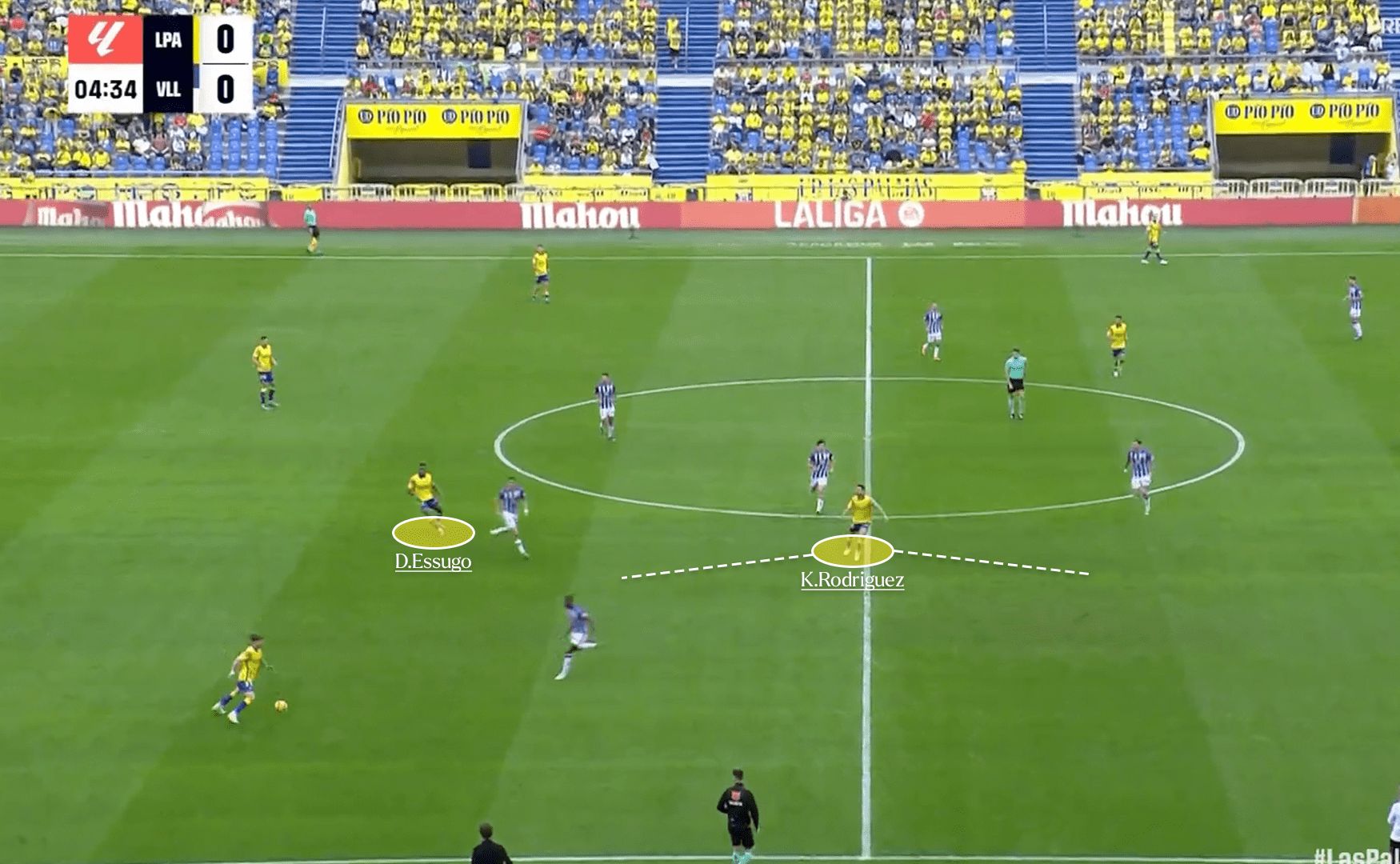
Like his partner, Essugo is also not shy of stepping forward into different zones. When it comes to sealing off their pressing structure, the Portuguese steps out of the 4-4-2 to put the opposition’s deepest midfielder under duress.
Both of the midfielders are key to Martinez’s keenness to play quickly, and move the ball frantically, relying on the dynamic movements of those ahead of them.
Winger conundrums
You could argue that exuberant winger Alberto Moleiro has had those sparkling moments of brilliance stripped under Martinez, having only scored once in that time. But the new head coach circa-October, has worked out a unique function for a player, who under Carrion, looked to have little instruction.
At the beginning of the campaign, he was the subject of unwanted one-vs-two situations, where he would get fixed in the ravine of choice between passing and dribbling. With Martinez, there is an emphasis on creating triangles in wide areas. The youngster arguably suits a more narrow role compared to the one seen under Martinez, where he frequently douses the bottom of his boots with touchline chalk – but there is evidence to suggest he can play this wide role.
One of the attacking two in the 2-4-2-2, moves to the flanks to seal an overload, usually drawing in a winger and a full-back to that zone, and as the Islanders’ full-back and midfielder attract the attention – Moleiro runs into the vacated space.

His mazy run for the short-lived opener against Real Madrid came as little surprise to those who have watched him over the last year, but certainly a surprise to those to have seen him under Martinez. He slalomed through Los Blancos’ midfield before deflecting out wide to create a simple tap in for Fabio Silva.
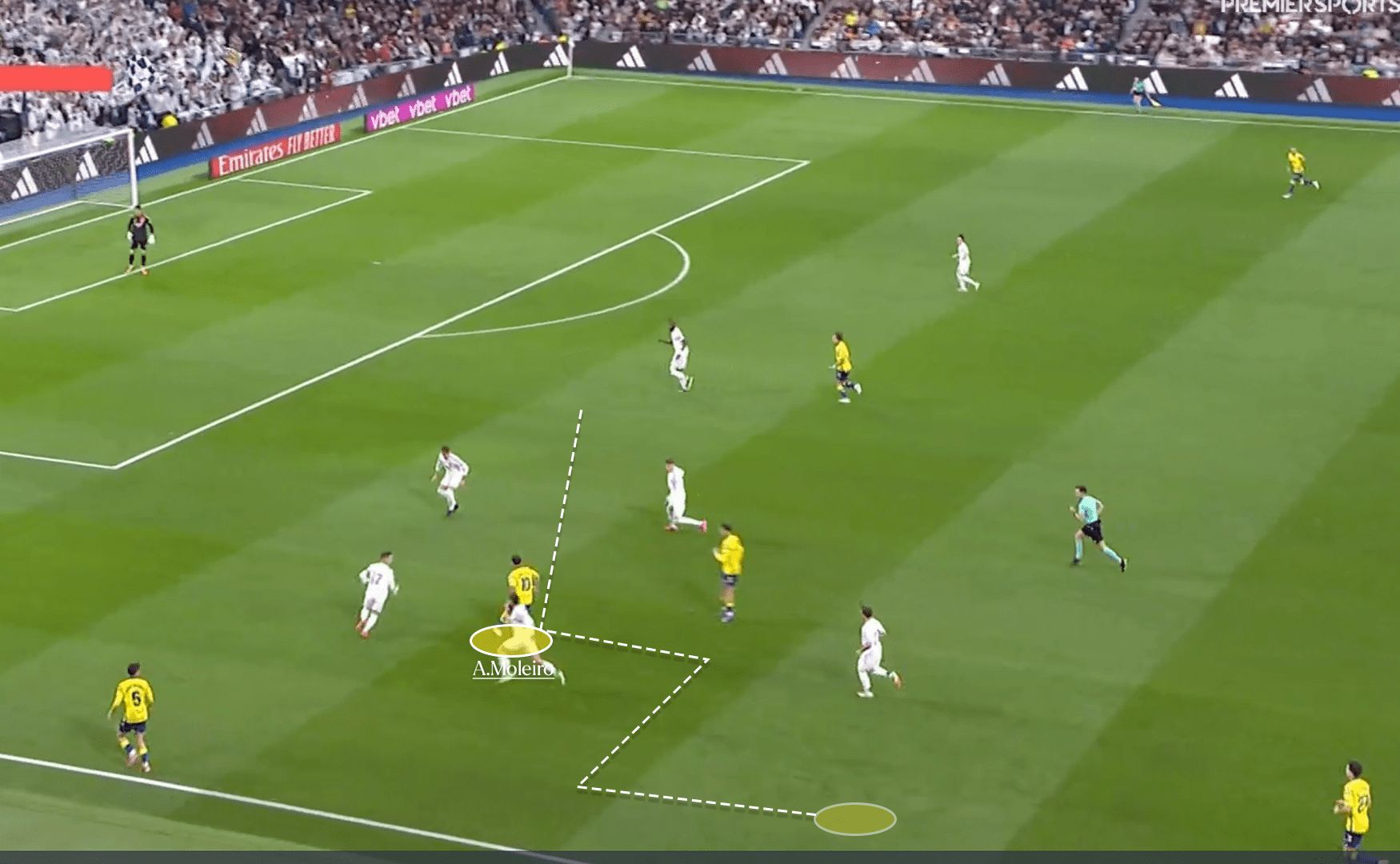
Moleiro’s creativity is very much still in the room with us.
As for Sandro Ramirez, Los Amarillos’ top scorer this season, Martinez has found room for him on the right flank. Used in that role for two reasons, the first being his ability to invert into that box to receive from goal kicks.
The Spaniard is a useful receptacle when the opposition do decide to squeeze high up the pitch, as the Islanders back line can look for his deeper movement within that 2-4-2-2 as a direct option to play into.
His build-up qualities are not the only thing Martinez picks him for, his ability to operate within that right half-space is extremely useful. Having scored seven goals this season, four of which from that zone – Ramirez ensures that Los Amarillos remain a two-sided threat when they get the ball wide.
A word for the defence
Even with their fresh pressing structure and improved attack, the fact still remains that Las Palmas are the second-worst team for goals against in the division. Their mixed out-of-possession game plan leads to plenty of chances for the opposition, and ultimately, with the squad’s defensive armoury, are not the best-suited to deal with them.
Martinez’s version of Las Palmas are vulnerable to wide overloads, something of a surrpise considering they are relatively strong at creating those themselves. This comes from their pressing, which funnels the ball into wide areas, leading to opposition numerical advantages. They pack the central areas using their narrow 4-4-2 shape out of possession, encouraging opposition teams to horseshoe around them.
The logic seemingly is that the further away the opposition are from the Islanders’ goal, the least likely they are to score – but there has to be a balance. Los Amarillos have conceded 413 crosses this season so far, which is the third-highest total against in the top-flight. 264 of these have come in league games under Martinez, which is just shy of 63%.
The system is well-drilled to funnel the ball into those flanks, but arguably not astute enough at defending those first and second balls – giving Martinez food for thought for the second-half of the campaign.
The post Analysis: The tactics behind Las Palmas’ upturn in form under Diego Martinez appeared first on Football España.

